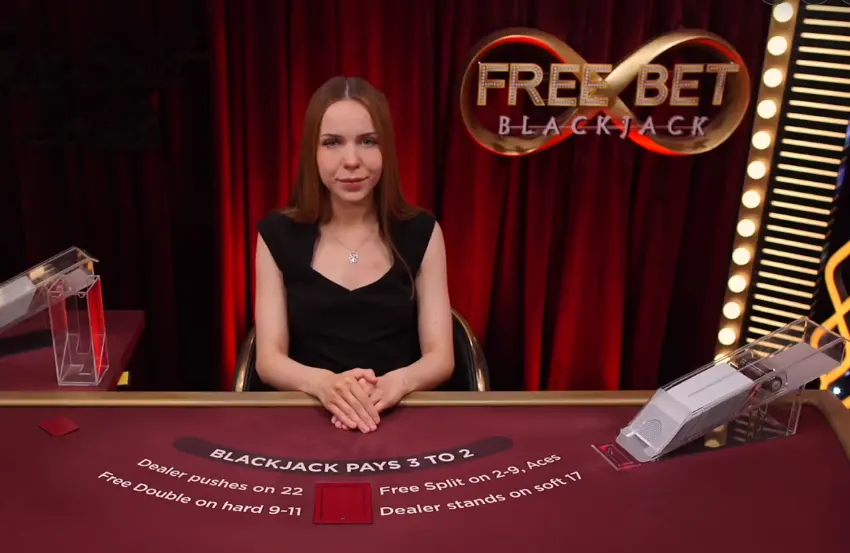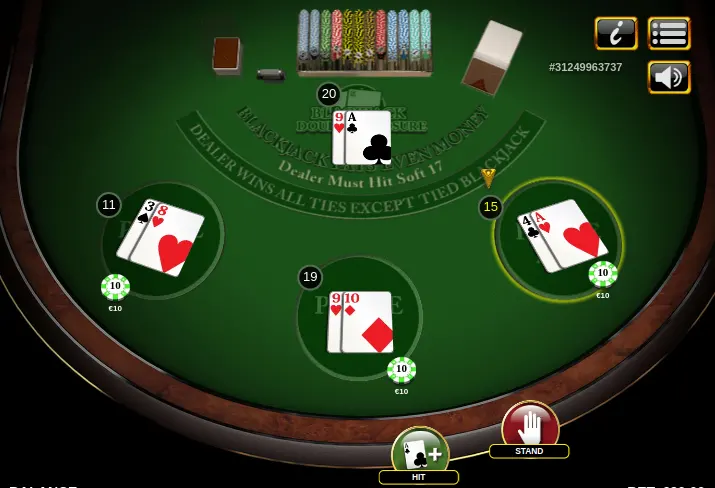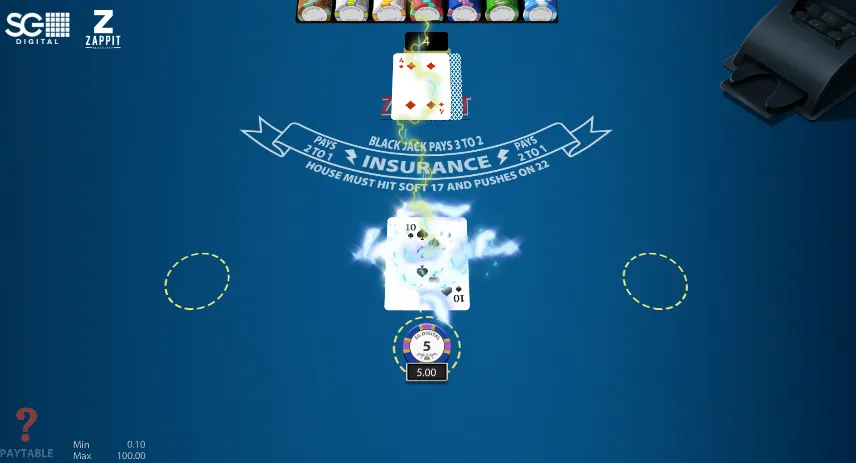Online casinos boast dozens of enticing blackjack variations but not all of them are created equal. Some offer less favorable playing conditions than others, significantly reducing players’ winning odds in the long run. Their poor rules go hand in hand with higher house edges that can and will drain your blackjack bankroll the longer you play.
Where gambling is concerned, there is one rule of thumb. It stipulates that the greater the house edge is, the more money players stand to lose, and conversely, the more casinos will profit from them.
In the following article, we are going to share with you some of the worst blackjack games you can find at online casinos. You might want to avoid them if you wish to improve your winning chances and lose less over the long run.
Blackjack Rule Variations Players Should Generally Avoid
 Blackjack is easily the best game you can play at online casinos because it yields an almost negligible house advantage of approximately half a percent. It is worthwhile noting this percentage can go up depending on one’s skill level.
Blackjack is easily the best game you can play at online casinos because it yields an almost negligible house advantage of approximately half a percent. It is worthwhile noting this percentage can go up depending on one’s skill level.
Players who follow their gut instincts rather than using blackjack basic strategy typically face a higher house edge of around 2%, sometimes even more. Basic strategy reduces your disadvantage because it tells you when it is optimal to hit, stand, double down, or split.
If you find it difficult to memorize all correct plays, you can always print out a strategy chart to consult with during your online blackjack sessions. Rookie players will find one such chart in SuperCasinoSites’ thorough article on
blackjack strategies.
Assuming you have already mastered basic strategy, the first thing you should do before you start playing online blackjack for real money is to check the ruleset. This is because rule variations in blackjack have an impact on players’ overall expected return in the long term.
Some rules will improve your expected value, while others work in favor of the casino. Below, we list some of the most common rules that boost the statistical advantage of the house and reduce the long-term profitability of basic strategy players. The percentages denote the corresponding increase in house edges.
- +0.09% if doubling down is restricted only to hard totals of 9, 10, and 11.
- +0.18% if doubling down is possible only on hard totals of 10 and 11.
- +0.11 if no hole cards are in play for the dealer. This is often the case in variations that abide by the European set of rules.
- +0.10% when hole cards are in play but the dealer never peeks to check for potential blackjacks when showing a ten. This rule is detrimental because players can potentially lose all their wagers, including those from double downs and splits if the dealer ends up having a blackjack.
- +0.10% when resplitting is disallowed.
- +0.14% when doubling down on split hands is prohibited.
- +0.18% if splitting aces is prohibited.
- +1.39% if blackjacks pay at reduced odds of 6 to 5.
- +2.27% if blackjacks pay even money (1 to 1).
- +0.22% when the dealer must draw on soft totals of 17.
- +6.91% when the dealer pushes with the player on totals of 22 instead of busting.
Now that you know which rule variations are generally detrimental, let’s examine four of the worst blackjack variants that we found at online casinos. All of them produce house edges in excess of half a percent and offer poor rules that decrease players’ long-term theoretical returns. These are going to cost you far more money than blackjack games with friendlier rules.
Despite their poorer odds, these blackjack variants still offer better chances of winning compared to other casino games like roulette, online slots, and live game shows.
Free Bet Blackjack by Evolution Gaming - the Worst of the Bunch
This blackjack variation first debuted in Las Vegas casinos a decade or so ago. It also became available at many live dealer casinos after Evolution Gaming adapted it for online play in 2019.
The main peculiarity of this variant is that it enables players to double down or split their hands at no cost. Sounds great, right? Well, we hate to break it to you but there is a catch and it nearly triples the house advantage.
The main pitfall of playing Free Bet Blackjack is that if the dealer draws to 22, they push with the player instead of busting. This is basically the same as someone advertising free burger patties while requiring customers to pay thrice than normal for the bread bun.

Rules of Play in Free Bet Blackjack

Expected Return in Free Bet Blackjack
Rules of Play in Free Bet Blackjack
Evolution Gaming launched the game as part of their Infinite series of live blackjack games, where a limitless number of players can join the action simultaneously. It features several optional side wagers, including 21+3, Bust It, Any Pair, and Hot 3.
These should be avoided altogether as they carry higher house edges compared to the main game. The other rules of play in Free Bet Blackjack are as follows:
Expected Return in Free Bet Blackjack
This variation only goes to show there is nothing free on the casino floor as its house edge is nearly three times higher than that in standard blackjack with player-friendly rules. Here you are combating a 1.55% casino advantage provided that you follow the perfect basic strategy. Those who play haphazardly based on hunches and gut feelings face an even higher house edge.
As for the side bets we previously mentioned, you better forget about them if you want to be a winning player. All four optional wagers have lower expected returns than the main game as you can see below. Place them in moderation only or else they could quickly drain your bankroll.
| Theoretical Return and Payouts in Free Bet Blackjack by Evolution Gaming |
| Bet Type | Payouts | Return to Player (RTP) |
| Main Game | 2 to 1 for winning insurance bets, 3 to 2 for blackjacks, 1 to 1 for all other winning wagers | 98.45% |
| Bust It Side Bet | 250 to 1* | 94.12% |
| Hot 3 Side Bet | 100 to 1 | 94.60% |
| Any Pair Side Bet | 25 to 1 | 95.90% |
| 21+3 Side Bet | 100 to 1 | 96.30% |
*We have listed only the maximum payouts. Some side bets pay at lower house odds, depending on the exact combination of cards.
Super Fun 21
Multiple software suppliers have released variations of this intriguing game over the years, including major names like Playtech, Microgaming, RTG, and OpenBet. One of the latest versions, Super Fun 21 Extreme, comes from Scientific Games.
Despite its attractive name, Super Fun 21 is not the best blackjack variation you can pick where winning odds are concerned. The game is deceptive as it offers many liberal and player-friendly rules but their merits are altogether offset by the reduced payouts on blackjacks.

Super Fun 21 Extreme by Scientific Games

Expected Return in Super Fun 21
Super Fun 21 Extreme by Scientific Games
Deck number varies based on software provider and can range anywhere from one to six packs. The variants released by Scientific Games and RealTime Gaming (RTG) are both dealt out of six decks, reshuffled after each round. What follows are the playing conditions in the Scientific Games version but the rules generally overlap across different online variants of Super Fun 21.
- Players can double down up to three times per hand on any total.
- Doubling down after splits is permitted.
- The dealer peeks for blackjacks when showing an ace or a ten.
- Surrendering unresolved hands is possible at any time after the dealer has peeked for a blackjack, including after double downs and splits
- Blackjacks pay at enhanced odds of 5 to 2, i.e. two and a half times the original bet.
- Players instantly win at odds of 2 to 1 with six-card and five-card totals of 21 unless they have doubled, in which case the hands pay even money.
- Players instantly win at odds of 2 to 1 with six-card totals of 20 or less unless the hand has been doubled on. If so, the hand returns even money.
- Player blackjacks instantly win
As these conditions are extremely favorable for players, the software developers have incorporated several other rules to negate this advantage.
- The dealer must hit soft totals of 17.
- The dealer pushes with the player on totals of 22 instead of busting.
- Resplitting is impossible.
- A side bet with a monstrous house edge is available to players. Known as the Diamond Bonus, it pays at odds of 250 to 1 for blackjacks comprising diamond-suited cards.
The variants released by Microgaming, Playtech, and RealTime Gaming pay even money for blackjacks to make things even worse for the player.
Expected Return in Super Fun 21
As intriguing as this game seems, it comes with a significantly higher house edge but the exact percentage depends on the number of decks in play. The more decks a variant uses, the greater the house edge gets. Scientific Games’ version uses six standard decks for a casino advantage of 1.29%.
As for the Diamond Bonus side bet, it gives the online casino an abhorrent edge of 25.50%. The percentage alone leaves little to no doubt that this side wager is not worth the bother.
| Theoretical Return and House Edges in Super Fun 21 Extreme |
| Bet Type |
Theoretical Return |
House Edge |
| Diamond Bonus Side Bet |
74.50% |
25.50% |
| Insurance Bet |
92.60% |
7.40% |
| All Other Bets in the Main Game |
98.71% |
1.29% |
To our knowledge, Playtech’s Super 21 is slightly better as it produces a house edge of 1.06% in the main game. We recommend you choose it over Scientific Games’ version if you still insist on playing this unusual blackjack variant.
Blackjack is easily the best game you can play at online casinos because it yields an almost negligible house advantage of approximately half a percent. It is worthwhile noting this percentage can go up depending on one’s skill level.


